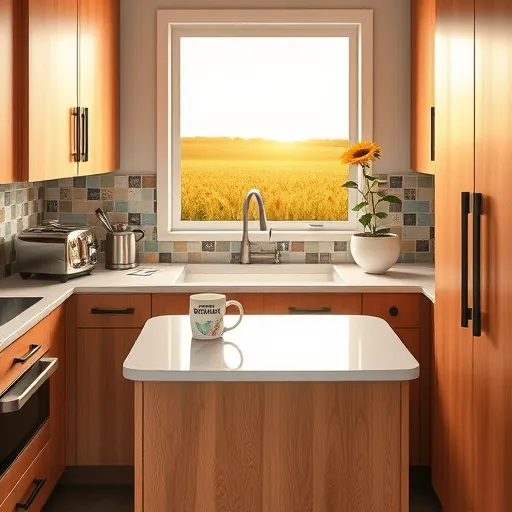
Cost of Replacing a Kitchen Sink and Faucet | Complete Guide 2024
What Influences the Overall Cost of Replacing a Kitchen Sink and Faucet?
Replacing a kitchen sink and faucet is a common upgrade that can refresh the look and functionality of your kitchen. However, the cost of replacing a kitchen sink and faucet varies widely based on multiple factors. Knowing these influences helps homeowners plan financially and choose the right options for their space.
Key influences include:
Type and Material of the Sink: From durable stainless steel to elegant granite composite, material choice impacts price.
Faucet Features and Style: Basic models are less costly, while touchless or specialized faucets add to expenses.
Labor Costs: Depending on your location and complexity of installation, labor can significantly alter total costs.
Additional Plumbing Work: Sometimes, plumbing updates or repairs are necessary, which increases the overall expense.
Permits and Regulations: In certain areas, permits may be required, adding to costs but ensuring compliance.
How Much Does a Basic Kitchen Sink and Faucet Replacement Cost?
For homeowners seeking an affordable yet functional upgrade, a basic sink and faucet replacement provides an excellent solution. On average, the cost of replacing a kitchen sink and faucet for standard models ranges from $300 to $700. This includes mid-range materials and professional installation.
A typical setup might include a stainless steel sink paired with a straightforward push-down or single-handle faucet. These options offer durability, ease of use, and affordability.
It’s important to consider not only the initial purchase price but also installation costs. Skilled plumbers typically charge between $150 and $300 for the job, depending on complexities such as existing plumbing condition or needing to modify cabinet cuts.
What Are the Factors That Affect Costs When Upgrading to Premium Sinks and Faucets?
If you’re aiming for a high-end kitchen aesthetic or increased functionality, investing in premium materials and features can significantly raise your expenditure. The cost of replacing a kitchen sink and faucet in this category can range from $1,000 to over $3,000.
Premium materials include high-end kitchen remodeling options like custom-crafted stone sinks or designer finishes. Faucets may feature digital controls, water-saving technology, or intricate designs, all contributing to higher costs.
Labor costs also increase with complexity, especially if custom cabinetry or countertops require removal or modification to accommodate larger or more elaborate fixtures.
How Do Material Choices Impact the Cost of Replacements?
Why do materials matter when calculating replacement costs?
Materials are a primary driver of expense in kitchen sink and faucet replacement. Stainless steel is popular due to its affordability and durability, typically costing between $150 and $400 for a quality model. In contrast, composite granite sinks can range from $500 to $1,200, offering improved aesthetics and resistance to scratches.
Faucets made of brass or stainless steel are more cost-effective than those crafted from solid metal or featuring special finishes like matte black or antique bronze, which can add $200 to $600 or more.
Choosing eco-friendly or water-efficient options may also increase initial investment but result in long-term savings. To explore modern designs that optimize space and functionality, visit our modern kitchen remodel ideas.
What Are the Typical Labor Costs for Installing a New Sink and Faucet?
How much should I expect to pay for professional installation?
Labor costs are a significant component of the cost of replacing a kitchen sink and faucet. Depending on your location and the complexity of the project, professional plumbing services can charge anywhere from $150 to $350.
Factors influencing labor cost include:
Existing plumbing conditions: If pipes need repositioning, expect higher labor fees.
Cabinet modifications: Larger or custom sinks may require resizing or reinforcement.
Additional features: Installing filtered water systems or voice-activated faucets increases complexity.
To ensure a smooth process, working with experienced contractors like best kitchen remodelers can guarantee quality workmanship and minimize surprises.
Should I Consider Upgrading Other Kitchen Components During Sink Replacement?
Is it beneficial to combine sink and faucet upgrades with other kitchen improvements?
Strategically, combining multiple upgrades during a sink replacement can save on labor costs and create a cohesive aesthetic. For instance, upgrading countertops, cabinet hardware, or backsplash can complement the new sink and faucet, enhancing functionality and style.
Often, planning these improvements together simplifies scheduling and budget management. To explore comprehensive renovation strategies, browse our kitchen layout optimization tips.
Are There Additional Costs to Consider Beyond the Basic Replacement?
What extra expenses might I encounter during my kitchen sink and faucet upgrade?
Beyond the primary costs, several ancillary expenses may arise, such as:
Permitting and Inspection Fees: Necessary in some municipalities to ensure code compliance.
Disposal and Demolition: Removing old fixtures and debris disposal can incur charges.
Customizations and Special Features: Water filtration systems, integrated soap dispensers, or smart technology can increase expenses.
Cabinet and Countertop Repair: Damage during removal may require fixing or replacing surfaces.
Planning ahead and consulting with professionals can help identify these potential costs, keeping your project within budget.
How Can I Ensure My Kitchen Sink and Faucet Replacement Is Cost-Effective?
What tips can help me save money without sacrificing quality?
To optimize your investment:
Compare materials thoroughly: Balance durability and aesthetics to find suitable options within your budget.
Get multiple quotes: Consulting different contractors provides pricing transparency and better deals.
choose versatile fixtures: Modern, timeless designs tend to remain stylish over the years, reducing the need for frequent updates.
Plan comprehensively: Incorporate your sink and faucet upgrade into larger kitchen renovation projects for efficiency.
For innovative design ideas and experienced guidance, consider consulting professionals who specialize in high-end kitchen remodeling for a cohesive and long-lasting upgrade.
Frequently Asked Questions (FAQs)
What is the average lifespan of a kitchen sink and faucet?
Typically, quality kitchen sinks last 15 to 30 years, while faucets can function effectively for 10 to 20 years, depending on usage and maintenance.
Can I replace my kitchen sink and faucet myself?
While manageable for DIY enthusiasts with plumbing experience, professionals ensure proper installation, preventing leaks and future issues. For complex setups or renovations, hiring a licensed plumber is recommended.
How long does a typical sink and faucet replacement take?
Most projects are completed within a few hours to a full day, depending on the complexity and any necessary modifications.
Is it necessary to upgrade my plumbing when replacing the sink and faucet?
If your existing plumbing is outdated or damaged, upgrades might be necessary to ensure optimal performance and compliance with local codes. A professional assessment can determine if additional work is needed.
Conclusion: Making Informed Decisions for Your Kitchen Upgrade
Understanding the cost of replacing a kitchen sink and faucet involves considering materials, labor, and additional project components. Whether you opt for a budget-friendly setup or a luxurious upgrade, planning carefully and working with experienced professionals like modern kitchen remodel experts ensures a seamless transition. With the right approach, you'll transform your kitchen into a functional, stylish space that enhances your home's value and your daily living experience.


















